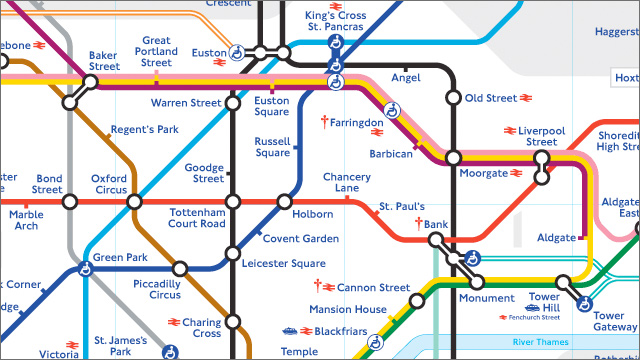Chapter 47
Computational thinking
Thinking how a problem can be solved using two basic steps
- Write the problem in a way that is potentially solvable by an algorithm
- Try to construct the algorithm
Representational abstraction
Removing unnecessary detail e.g.

The tube map ignores all the twist and turns the train actually makes
Abstraction by generalisation
Grouping common characteristics to arrive at a hierarchical relationship
Data abstraction
The details of how data is stored is hidden
Chapter 48
Computational problems
At the most abstract level a computational problem can be represented as an input (information relevant to the problem), the Computational problem and output (the solution to the problem)
Specifying preconditions
In order to make sure a function never crashes a precondition must be specified with the documentation for the function
Advantages of preconditions
- Ensures user knows what checks need to be carried out before calling subroutine
- If there are no preconditions the user can be confident that necessary checks will be carried out by the subroutine
- Clear documentation of inputs, outputs and preconditions helps make the subroutine reusable
The need for reusable program components
Reusable program components are useful since if a component is needed in multiple modules of a project
Using prewritten and tested components will save time
Caching
Caching is the temporary storage of program instructions and data that have been used once and may be needed again shortly
Chapter 49
Procedural abstraction
Using a procedure to carry out a series of steps
Procedure interface
How the procedure is called and the arguments required and their data types
Problem decomposition
Computational problems being broken down into sub-problems
Top-down design
Breaking a problem down into the major tasks to be performed, each of these tasks are further broken down into separate subtasks, and so on until each subtask is simple enough to be written as a self-contained module or subroutine
Advantages of problem decomposition
- Makes writing the program easier and makes it easier to test and maintain
Hierarchy charts
Tool for representing the structure of a program, showing how the modules relate to each other to form the complete solution
Depicted as an upside-down tree structure with modules being broken down into smaller modules until each module is a few lines of code